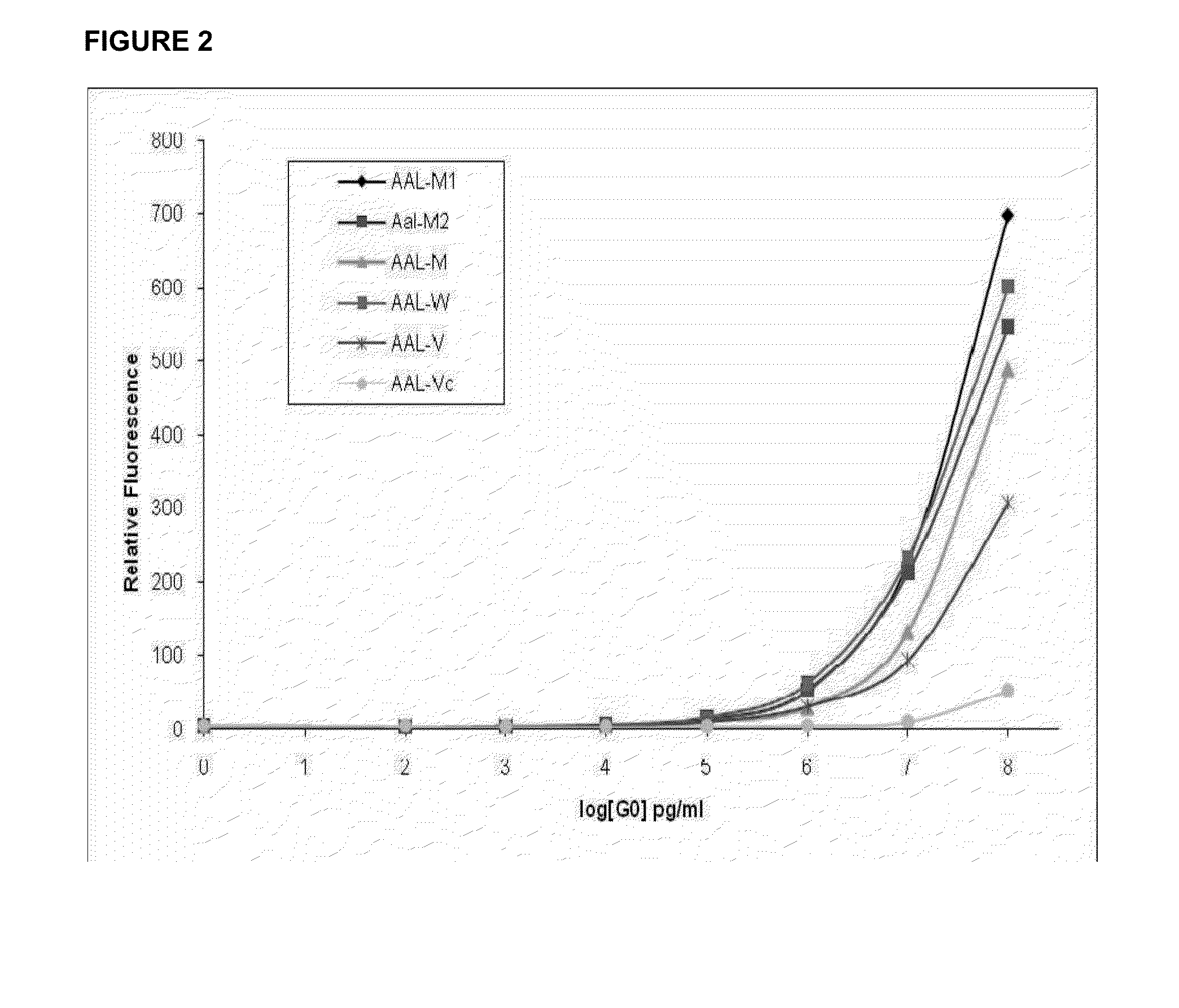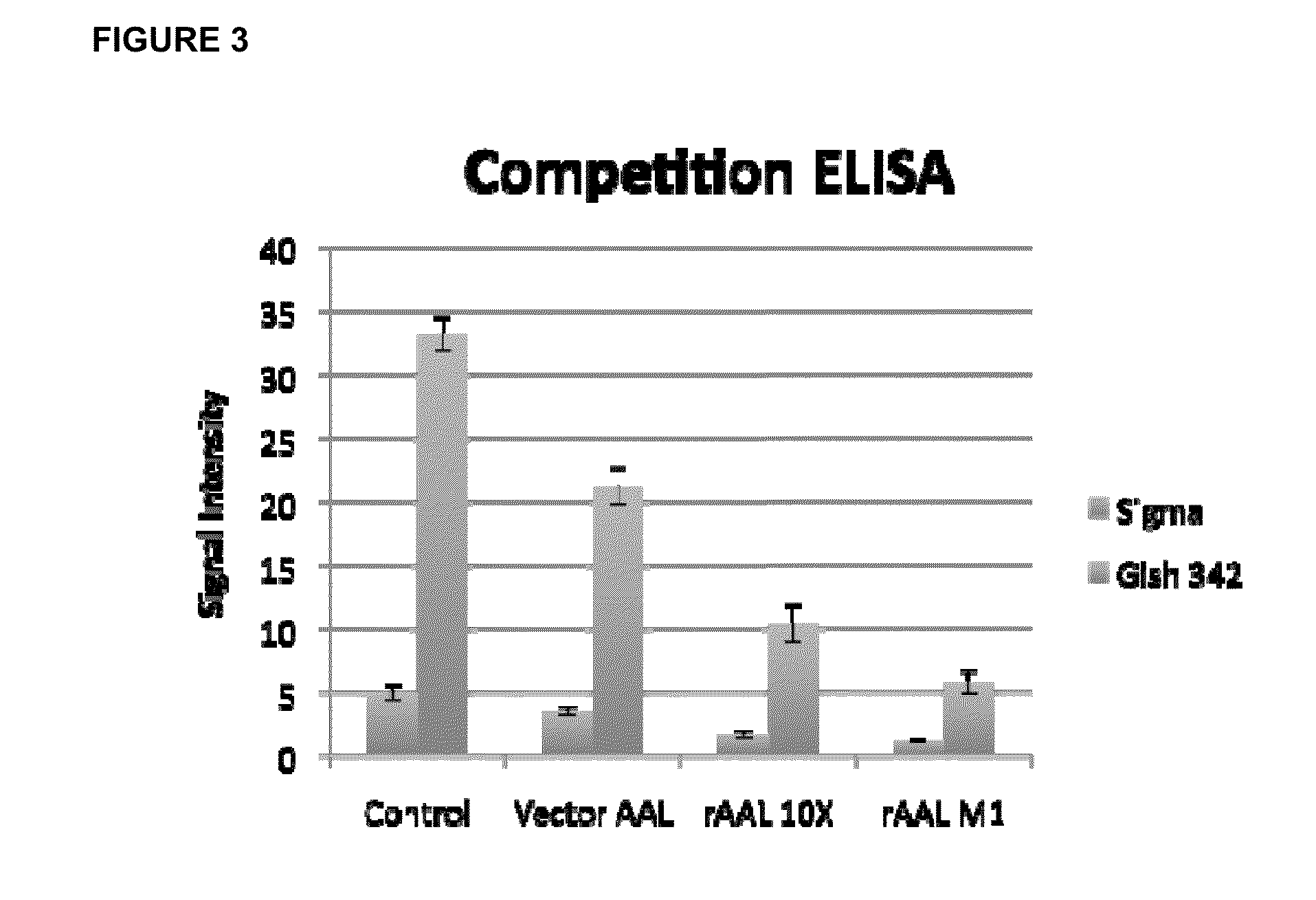Lectin Assay for Assessing Glycoforms as an Early Marker in Disease
a glycoform and marker technology, applied in the field of lectin assay for assessing glycoforms as early markers in disease, can solve the problems of difficult success rate in raising antibodies, low success rate of endogenous glycosylated protein isoforms, and difficult to d
- Summary
- Abstract
- Description
- Claims
- Application Information
AI Technical Summary
Benefits of technology
Problems solved by technology
Method used
Image
Examples
example 1
rAAL Protein Selective for Cirrhotic Patients
[0028]Recombinant lectin (rAAL) was shown to have a higher affinity for the IgG0 ligand than commercially available AAL. In competition ELISA based experiments using serum samples, rAAL had a significantly higher affinity in cirrhotic patients compared with controls (see FIG. 3).
Experimental Protocol:
[0029]96 well plates are coated with sodium periodate (NalO4) treated mouse IgG (1.0 ug / well). 3 uL of serum from a patient with cirrhosis (Gish 342) or serum from normal donors (Sigma) were diluted to 100 uL and added to antibody coated wells. Plates are washed and then incubated at room temperature for 30 minutes / shaking with equivalent amounts of either unbiotinylated commercial (Vector) AAL, unbiotinylated recombinant 10×-His tagged (rAAL 10×), or unbiotinylated recombinant 10×-His tagged mutant AAL (rAAL N129Q,N224Q)). Equivalent amounts of biotinylated AAL was then added to each well and incubated for 1 hour at room temperature / shaking....
PUM
| Property | Measurement | Unit |
|---|---|---|
| affinity | aaaaa | aaaaa |
| concentrations | aaaaa | aaaaa |
| binding affinity | aaaaa | aaaaa |
Abstract
Description
Claims
Application Information
 Login to view more
Login to view more - R&D Engineer
- R&D Manager
- IP Professional
- Industry Leading Data Capabilities
- Powerful AI technology
- Patent DNA Extraction
Browse by: Latest US Patents, China's latest patents, Technical Efficacy Thesaurus, Application Domain, Technology Topic.
© 2024 PatSnap. All rights reserved.Legal|Privacy policy|Modern Slavery Act Transparency Statement|Sitemap



